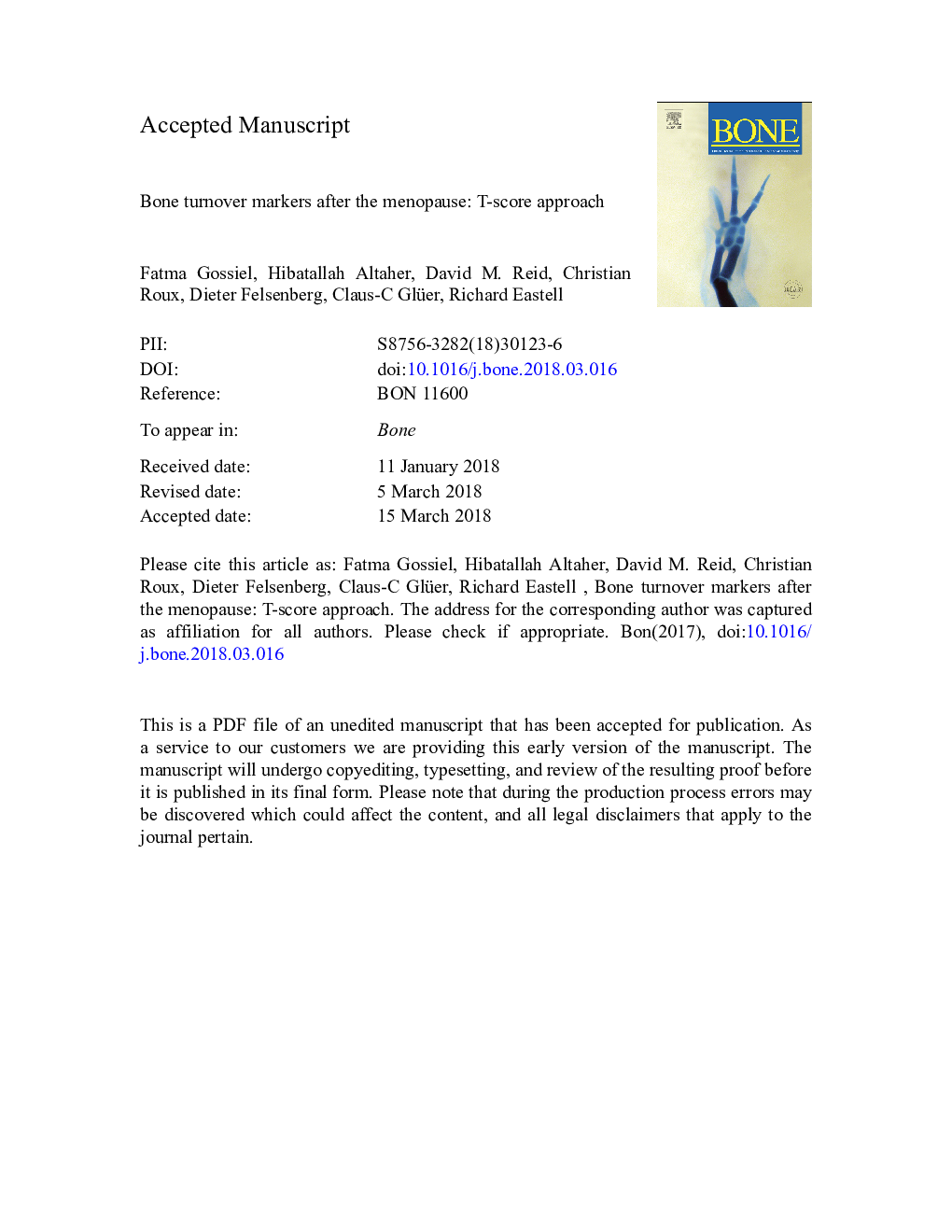| Article ID | Journal | Published Year | Pages | File Type |
|---|---|---|---|---|
| 8624900 | Bone | 2018 | 20 Pages |
Abstract
We studied 657 healthy women ages 20 to 79 from five European cities (the OPUS Study) and divided them into two premenopausal age groups, 20 to 29 (n = 129), 30 to 39 years (n = 183), and three postmenopausal groups 1 to 10 years (n = 91), 11 to 20 years (n = 131) and 21+ years since menopause (n = 123). We measured collagen type I C-telopeptide (CTX, a marker of bone resorption) and procollagen I N-propeptide (PINP, a marker of bone formation). We used these two markers to calculate the overall bone turnover and the difference between bone formation and resorption (bone balance) using the results from the women ages 30 to 39 years to calculate a standardised score (T-score). We found that the CTX and PINP levels were higher in the women ages 20 to 29 and in the women in the three menopausal groups as compared to women ages 30 to 39 years (p < 0.001). For example, the CTX and PINP levels were 80 and 33% higher in women 1 to 10 years since menopause as compared to women ages 30 to 39 years. In this group of postmenopausal women, the bone turnover expressed as a T-score was 0.72 (0.57 to 0.88, 95%CI) and the bone balance was â0.37 (â0.59 to â0.16). There was greater rate of bone loss from the total hip in all the groups of women after the menopause compared to women before the menopause. We conclude that the bone loss after the menopause is associated with both an increase in bone turnover and a negative bone balance and that bone loss was most clearly associated with overall bone turnover.
Related Topics
Life Sciences
Biochemistry, Genetics and Molecular Biology
Developmental Biology
Authors
Fatma Gossiel, Hibatallah Altaher, David M. Reid, Christian Roux, Dieter Felsenberg, Claus-C Glüer, Richard Eastell,
